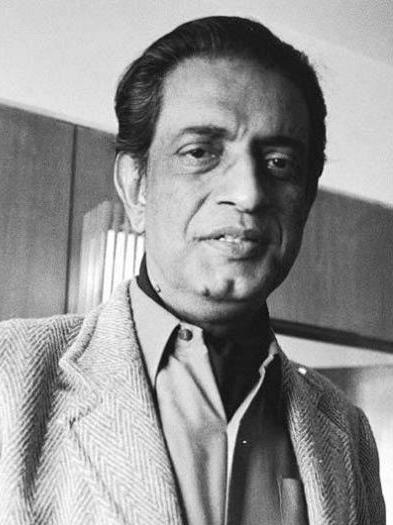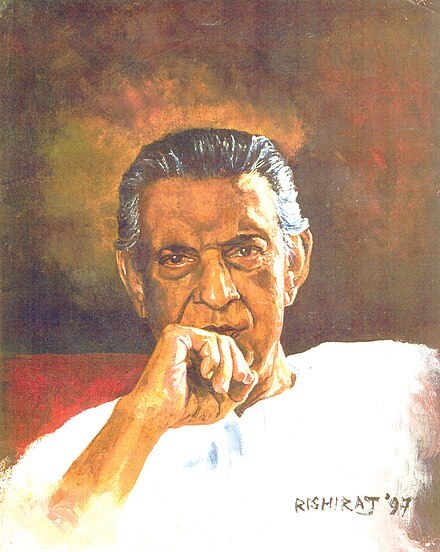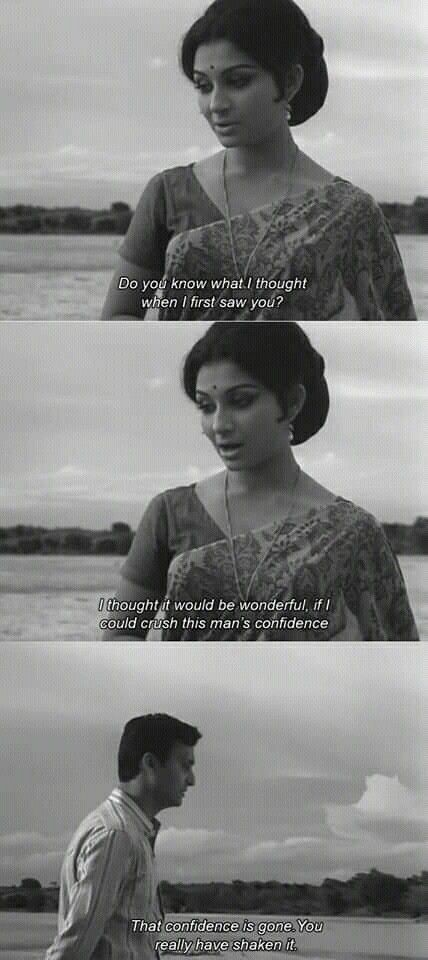#satyajit ray aranyer din ratri
Explore tagged Tumblr posts
Text
ফিরছে সত্যজিত রায়ের ‘অরন্যের দিনরাত্রি’ ‘আবার অরন্যের দিনরাত্রি’ হয়ে

পর্দায় ফিরছে ‘অরন্যের দিনরাত্রি’। হ্যাঁ ঠিকই ধরেছেন এটি সুনীল গঙ্গোপাধ্যায় রচিত ঐ নামেরই উপন্যাসের ওপর বানানো সত্যজিত রায়ের ছবি। তবে এবারে আসছে নতুন্রুপে, ‘আবার অরন্যের দিনরাত্রি’ নামে। পরিচালক ও নতুন। স্বাভাবিকভাবেই গল্পেও এসেছে অনেকটা পরিবর্তন। টলিপাড়ায় ইতিমধ্যেই এই ছবি নিয়ে ছড়িয়েছে উত্তেজনা। ‘আবার অরন্যের দিনরাত্রি’ সত্যজিত রায়ের ‘অরন্যের দিনরাত্রি’কে সম্মান তো জানাবে বটেই এবং নতুন প্রজন্মের কাছে পুরনো গল্পের নতুন রুপে নিবেদন হিসেবেও প্রকাশ পাবে বলে মনে করা হচ্ছে। এই ছবির পরিচালক কে, কেমন থাকছে ছবির গল্প, কারা কারা রয়েছেন চরিত্রায়নে বিশদে জানতে ক্লিক করুন Abar aranyer dinratri
0 notes
Text
0 notes
Text
BEST DIRECTORS IN CINEMA-3
Hi everyone! This blog is going to be the 3rd part of 8 Part Series of who I think are the Best Directors Cinema as ever seen
And today I will be talking about
SATYAJIT RAY

Satyajit Ray (born May 2, 1921, Calcutta [now Kolkata], India—died April 23, 1992, Calcutta) was a Bengali motion-picture director, writer, and illustrator who brought the Indian cinema to world recognition with Pather Panchali (1955; The Song of the Road) and its two sequels, known as the Apu Trilogy. As a director, Ray was noted for his humanism, his versatility, and his detailed control over his films and their music. He was one of the greatest filmmakers of the 20th century.
(Early Life)
Ray was an only child whose father died in 1923. His grandfather was a writer and illustrator, and his father, Sukumar Ray, was a writer and illustrator of Bengali nonsense verse. Ray grew up in Calcutta (now Kolkata) and was looked after by his mother. He entered a government school, where he was taught chiefly in Bengali, and then studied at Presidency College, Calcutta’s leading college, where he was taught in English. By the time he graduated in 1940, he was fluent in both languages. In 1940 his mother persuaded him to attend art school at Santiniketan, Rabindranath Tagore’s rural university northwest of Calcutta. There Ray, whose interests had been exclusively urban and Western-oriented, was exposed to Indian and other Eastern art and gained a deeper appreciation of both Eastern and Western culture, a harmonious combination that is evident in his films.
(His Famous Works)
Ray's first film, Pather Panchali (1955) won eleven international prizes, including the inaugural Best Human Document award at the 1956 Cannes Film Festival. This film, along with Aparajito (1956) and Apur Sansar (The World of Apu) (1959), form The Apu Trilogy. Ray did the scripting, casting, scoring, and editing, and designed his own credit titles and publicity material. He also authored several short stories and novels, primarily for young children and teenagers. Popular characters created by Ray include Feluda the sleuth, Professor Shonku the scientist, Tarini Khuro the storyteller, and Lalmohan Ganguly the novelist.
(Filmmaking Style)
His Filmmaking
Ray had been subconsciously paying a tribute to Jean Renoir throughout his career, who influenced him the most.Ray considered script-writing to be an integral part of direction. Initially he refused to make a film in any language other than Bengali. In his two non-Bengali feature films, he wrote the script in English; translators adapted it into Hindustani under Ray's supervision.The narrative structure of Ray's films are represented by musical forms such as sonata, fugue and rondo. Kanchenjunga, Nayak and Aranyer Din Ratri are examples of this structure.
(His Filmography)
Ray made over 36 feature film in his 4 decade long. He made movies such as Pather Panchali in 1955,Aparajito in 1956,Parash Pathar and Jalsaghar in 1958, Apur Sansar in 1959, Devi in 1960. He made movies such as Teen Kanya in 1961, Kanchenjungha and Abhijan in 1962,Mahanagar in 1963,Charulata and Two I'm 1964,Kapurush-0-Mahapurush in 1965,Nayak in 1966,Chiriyakhana in 1967,Goopy Gyne & Bagha Byne in 1969,Aranyer Din Ratri and Pratiwandi in 1970, Seemabaddha and Sikkim in 1971,Inner Eyes in 1972,Ashani Sanket in 1973,Sonar Kella in 1974,Jana Aranyw in 1975,Bala in 1976,Shatranj ka Khilari in 1977,Joi Baba Felunath in 1979,Hirak Rajar Deshe and Pikoo in 1980,Sadgati in 1981,Ghare Bhare in 1984,Sukumar Ray in 1987,Ganashatru and Shakha Proshakha in 1990,Agantuk in 1990.

Satyajit Ray on 1994 stamp of India

Portrait of Satyajit Ray
(Awards & Honors)
Ray received many awards including 36 National Film Awards. He was awarded the Dadasaheb Phalke Award in 1985 and Legion Of Honor in 1987. The Government of India also awarded him with Padma Bhusan in 1965. He also received a Lifetime Achievement Award in 1992 at the Academy of Motion Pictures Arts and Sciences. He also won the Golden Lion at the Venice Film Festival
(Legacy)
Ray is considered one of the greatest film directors of all time. He is a cultural icon in India and in Bengali communities worldwide. Following his death, the city of Calcutta came to a virtual standstill, as hundreds of thousands of people gathered around his house to pay their last respects. Ray's influence has been widespread and deep in Bengali cinema; many Bengali directors, including Aparna Sen, Rituparno Ghosh and Gautam Ghose as well as Vishal Bhardwaj, Dibakar Banerjee, Shyam Benegal and Sujoy Ghosh from Hindi cinema in India, Tareq Masud and Tanvir Mokammel in Bangladesh, and Aneel Ahmad in England, have been influenced by his craft.Beyond India, filmmakers Martin Scorsese, Francis Ford Coppola, George Lucas, James Ivory, Abbas Kiarostami, Elia Kazan, William Wyler,François Truffaut, John Huston, Carlos Saura, Isao Takahata, Oliver Stone,Quentin Tarantino, Wes Anderson,Danny Boyle and Christopher Nolan.
(Sources)
And that's it for this part folks, I'll meet you with another blog about some the Greatest Directors Cinema has ever seen, Until then
CIAO
6 notes
·
View notes
Text

Aranyer Din Ratri dir. Satyajit Ray
#satyajit ray#moviebuff#movies#moviemania#movie quotes#movie#desi tumblr#desi#desi girl#desi aesthetic#poetry tumblr#desiblr#desi culture#oscar awards#vintage#quotes#philosophy#literature#cinemalover#cinephile#desi cinema#cinema#cinéma
7 notes
·
View notes
Text
कान क्लासिक में सत्यजित राय की 'अरण्येर दिन रात्रि', मौजूद रहीं- शर्मिला टैगोर और सिमी ग्रेवाल
अजित राय (कान, फ्रांस से) 78वें कान फिल्म समारोह के कान क्लासिक खंड में भारत के विश्व प्रसिद्ध फिल्मकार सत्यजित राय (Satyajit Ray) की साल 1969 में आई फिल्म अरण्येर दिन रात्रि (Aranyer Din Ratri) का प्रदर्शन किया गया। यह भारत के लिए गौरव का क्षण था। कान के बुनुएल थियेटर में कान फिल्म समारोह के निर्देशक थियरी फ्रेमों ने सत्यजित राय के साथ इस समारोह के लंबे रिश्ते को याद करते हुए विश्व सिनेमा ��ें…
0 notes
Text
Restoration Triumph: Aranyer Din Ratri at Cannes 2025
The resounding standing ovation at the Festival de Cannes 2025 still echoes in the hearts of cinephiles worldwide, marking a triumphant moment for Indian cinema and the enduring legacy of its greatest maestro, Satyajit Ray. On May 19, 2025, the newly restored 4K version of Ray’s 1970 classic, Aranyer Din Ratri (Days and Nights in the Forest), premiered in the prestigious Cannes Classics section,…
1 note
·
View note
Photo

Aranyer Din Ratri (1970) dir. Satyajit Ray
#Aranyer Din Ratri#days and nights in the forest#Satyajit Ray#sharmila tagore#indian cinema#bengali film#70s movies
310 notes
·
View notes
Photo

https://www.jozefsquare.com/product/polackova-vyletalova-days-nights-in-forest/
For poster shop and blog highlights please subscribe to our daily or weekly newsletter: http://eepurl.com/RvXo9 (25% OFF for Students)
42% POSTER SALE until 31.03.2019 / visit www.jozefsquare.com for more details
#Aranyer Din Ratri#Satyajit Ray#Movie Poster#Collage#Graphic Design#1970s Posters#Indian Cinema#Cinema Art#Olga Poláčková-Vyleťalová
5 notes
·
View notes
Photo






Sometimes I forget that Satyajit Ray was a graphic designer before he was a film director. No wonder the posters he designed for his films are almost as iconic as the films themselves.
Top Left: Devi (The Goddess), 1960 Top Right: Charulata (The Lonely Wife), 1964 Middle Left: Sonar Kella (The Golden Fortress), 1975 Middle Right: Aranyer Din Ratri (Days and Nights in the Forest), 1970 Bottom Left: Mahapurush (The Holy Man), 1965 Bottom Right: Ganashatru (Public Enemy), 1989
Source: The Guardian
#Satyajit Ray#graphic design#movie posters#Indian cinema#Devi#Charulata#Sonar Kella#Aranyer Din Ratri#Mahapurush#Ganashatru#Bengali#typeface
539 notes
·
View notes
Text
How would Satyajit Ray have responded to the pandemic?
How would Satyajit Ray have responded to the pandemic?
There may be clues in his cinema, which reveals a politically and socially conscious, and often prescient, vision of Bengal, India and humanity The Spanish Flu ended in April 1920. Satyajit Ray, India’s most fêted filmmaker, was born a year later, on May 2, 1921. This year marks his birth centenary, as another pandemic ravages the world, its impact particularly harsh on India now more than…

View On WordPress
#Aditya Shrikrishna#Apu Trilogy#Aranyer Din Ratri#Calcutta Trilogy#Emergency#Ganashatru#Indira Gandhi#Jalsaghar#Mahanagar#neorealism#Pandemic#Satyajit Ray#Shatranj ke Khiladi#Spanish Flu
0 notes
Photo





Aranyer Din Ratri (Satyajit Ray, 1970)
#Aranyer Din Ratri#Days and Nights in the Forest#Soumitra Chatterjee#Sharmila Tagore#Satyajit Ray#1970
5 notes
·
View notes
Photo

Days and Nights In the Forest Aka Aranyer Din Ratri
#days and nights in the forest#aranyer din ratri#satyajit ray#random richards#poetry#poem#poetic#haiku poem#haiku poetry#haiku#haiku on tumblr#daily haiku#simi garewal#aparna sen#Sunil Gangopadhyay
1 note
·
View note
Photo



Aranyer Din Ratri (1970)
2K notes
·
View notes
Text



Quotes from the movie :
Aranyer Din Ratri – Days and Nights in the Forest (1970) by Satyajit Ray
That she did shook Kylo's confidence and he did her's too
17 notes
·
View notes
Photo

Quatre amis abandonnent la ville et ses soucis et partent en vacances dans les forêts de Palamau. Ils vont apprendre à mieux se connaître à travers les filles qu’ils vont rencontrer.
(via Aranyer Din Ratri, Satyajit Ray (1970))
3 notes
·
View notes
Photo


Aranyer Din Ratri (1970) dir. Satyajit Ray
#Aranyer Din Ratri#days and nights in the forest#Satyajit Ray#Samit Bhanja#simi garewal#indian cinema#bengali film#70s movies
113 notes
·
View notes